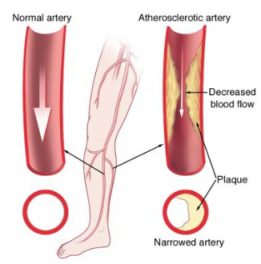Cold hands and cold feet are common problems. But are they normal? Not exactly. Here’s the thing: Our bodies are really good at regulating temperature — that is, assuming everything is functioning as it should. While the occasional cold hands is completely normal, having cold hands that bother you, start to feel numb, or change color indicates that something more is going on.
So, if your hands are cold, even in warm or mild temperatures, this article is for you. We’re going to uncover why you’re experiencing cold hands and what you can do to improve blood flow and warm up your hands.
Causes of Cold Hands
Usually, cold hands mean that your blood vessels are restricted in some way, leading to decreased blood flow. From certain conditions to staying in cold weather too long, there are various reasons for this. Below, we list the possible causes of cold hands.
1. Frostbite
Frostbite happens due to prolonged or extreme cold exposure. If you don’t wear gloves or mittens outside during the cold winter months, frostbite can occur in as little as 30 minutes. The cold temperature causes the constriction of your blood vessels, which means that less blood flows to these tissues.
In turn, this can lead to emergency health situations, including tissue death (which is usually indicative by a change in skin color and loss of feeling). In extreme cases, emergency health care is required, which may involve surgery to remove any dead tissue.
2. Anemia
Anemia refers to a condition where an individual has a low count of healthy red blood cells. Usually, this is caused by an iron deficiency, which lowers the body’s production of hemoglobin (the part of the red blood cell that carries oxygen to other parts of the body).
In this case, the body can struggle to deliver oxygen to areas of the body that need it, especially the feet and hands. As a result, you can experience cold hands, despite not being exposed to any cold temperatures. A blood test can usually indicate whether or not anemia is the cause of your cold hands and other symptoms.

3. Raynaud’s Syndrome
Raynaud’s disease is a common condition where narrowing of the blood vessels can occur, called vasospasm, leading to cold hands and feet. In fact, usually this Raynaud’s phenomenon lasts for a few minutes up to an hour.
Yet, there are two forms of Raynaud’s disease, primary and secondary. In primary Raynaud’s syndrome, there is no known cause. Meanwhile, secondary Raynaud’s syndrome is usually associated with other underlying diseases, including connective tissue diseases, such as rheumatoid arthritis, or an autoimmune condition.

4. Scleroderma
Scleroderma is a medical condition where the skin hardens and tightens, which may result in poor vascular circulation. However, this condition usually involves other symptoms, including swelling, itchiness, rashes, skin thickening, discoloration, and more.

5. Hypothyroidism
An underactive thyroid can also lead to poor circulation. This means that your thyroid gland, located in your neck, isn’t producing the right amount of the thyroid hormones. These hormones are involved in many metabolic processes in the body, as well as helping to regulate your body temperature. As a result, you can experience cold hands, amongst other symptoms including weight gain, fatigue, depression, hair loss, dry skin, constipation, and difficulty concentrating.
Similar to Raynaud’s syndrome, hypothyroidism is also associated with various other health issues including rheumatoid arthritis, lupus, and Sjorgren’s syndrome. Thus, you may also experience varying degrees of joint pain and other symptoms alongside this condition.

6. Peripheral Artery Disease (PAD)
Peripheral artery disease happens when plaque builds up on the arterial walls. This can lead to blockages, which causes poor circulation and cold hands. At the same time, peripheral artery disease is more likely to affect the feet and legs. Yet, it can impact the hands as well.
7. Peripheral Neuropathy
Diabetes can actually be an underlying cause of cold hands. A major diabetic complication is known as peripheral neuropathy. This happens when blood sugar levels have been high for long durations, which can damage nerves. Usually, individuals notice a “pins-and-needles” sensation in the hands or feet as an early sign that this is occurring.

8. Pulmonary Hypertension
Pulmoney hypertension is typically associated with Raynaud’s disease. This is when there is high blood pressure in the blood vessels located in the lungs. Other symptoms of this condition include trouble breathing, fatigue, and dizziness.

9. Thoracic Outlet Syndrome
Thoracic outlet syndrome happens when the thoracic outlet, the space at the base of your neck under the collarbone, becomes compressed. In some cases, you may experience cold hands indicating that the blood vessels have become compressed. If this is the case, it’s really important to schedule a visit with your doctor to obtain further health information and treatment.
In many cases, shoulder mobility plays a key role in the development of thoracic outlet syndrome. Thus, your treatment may revolve around addressing any biomechanical and postural issues that are contributing to this problem.
How to Prevent Cold Hands & Improve Blood Flow
Ultimately, prevention and treatment depend on what is causing your cold hands in the first place. Discussing your options with your doctor is important to help improve your overall health and wellness. At the same time, the following methods can help prevent cold hands and improve blood flow:
1. Wear Mittens & Use Hand Warmers
This should be a no-brainer in cold weather and climates. When the temperature drops, dress accordingly! It’s simply not worth the risk.
When spending more time outside, using hand warmers can also add another layer of protection. These do have a time limit on them, so always make sure to bring extra that you can activate once your original warmers go cold.

2. Implement Lifestyle Changes
For many of the conditions above, your doctor may recommend making lifestyle changes, such as:
- Exercising regularly
- Avoiding alcohol and tobacco use
- Taking supplements if necessary (such as in the case of anemia)
- Limit stress
- Switch up your diet for more healthy and whole food options
- Try compression therapy (compression boots and other methods can help improve circulation)

3. Seek Out Medical Advice
If you aren’t sure why you’re experiencing cold hands, booking a visit with your doctor can help get to the bottom of it. Your doctor can perform an assessment, as well as run blood tests.
Once a diagnosis is made, your doctor can prescribe medications, such as those involved in treating hypertension, as well as make appropriate recommendations regarding your lifestyle.
In severe cases, surgery may be necessary to unblock nerve or remove damaged tissue.
Did You Know?
- Up to 15% of women report experiencing cold hands, without having any underlying cause. Some people just run a little cooler than others!
Final Thoughts…
Cold hands can indicate some serious health conditions. At the same time, some people just naturally run a little colder than others. If you’re unsure why your hands are cold and it’s becoming a problem, visiting your doctor is always a wise choice.
And remember, prevention is always key! For instance, frostbite is very-much preventable with the right clothing and time monitoring. The key takeaway is that cold hands combined with other symptoms can indicate something more health-wise is at play. If you’re unsure, it’s always a good idea to get it checked out!
Source link: https://athleticmuscle.com/cold-hands/ by Krista Bugden at athleticmuscle.com






